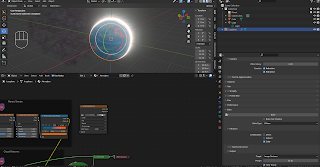the development of a technology or a paradigm shift doesnt immediately mean its actively being used or changing the industry, it takes a lot of time.
What if TL is measured by adoption of a technology? Then i run into the problem of "By what percentage?" and its not possible to get a census of medieval farmers or people what technology they are using.
Working back, we want TL to tell us what's available and used. It should tell us what technology do we find when we arrive on a world, setting, or era.
What's interesting is that DEVELOPMENT - access to technology and tools which multiply the most basic unit - cannot be seperated so easily from TL. if we seperate serf using cultures and slave using cultures - they are almost the same except that the risk is better passed on to the serf from the owner.
Development - access to tools and techniques. Eastern Roman agriculture discussed in the Appendix of the De Agriculture with notation about the 9-15C agriculture talked about each Eastern roman farmer having better tools but western farmers had crop rotation and better techniques evening out (If I recall correctly; the section was written in the 19C and discusses how 19C outputs per arable land is comparable to roman outputs).
Isnt Infra also a TL aspect? It takes Tech to have Infra to distribute good tools, while new techniques are advances in TL. Access to tools and techniques are important in Context of TL. a 17C Homesteader and Settler which had more freedoms than slaves and serfs of the same era - definitely had a difference in Tech, Wealth, and Access. Aqueducts, dams, weirs, Water/Wind Mills, etc... are access to power - arent they a matter of TL?
There are a lot of low hanging TLs, but adoption and access deal with a lot of economic and social forces - particularly development. Remembering that smaller developed countries can easily adopt and deploy new tech and social changes vs larger distributed countries and peoples. When writing TLs, there is the limits but then again its more like painting and there is a color spectrum in water color and we are dabbing technology on points in a line changing the color. Its not a Number Line its a Water Color Paint line.
Whats weird is that to address the misconceptions of TL it would take a whole lot of writing, pictures, or a 6 minute youtube video - and probably 1-2 mins per Tech level, and 1-2 minutes per Cultural and Development context of a Tech level. Misconception that we hear from new players and old players, that prevent some basic assumptions. misconception like Cutting and Bleeding edge technology and their access - reliability of these technology and the reliability of established technology. Heck - just plain reliability being a FACTOR of tool use.
I can imagine a Tech level discussion that would be several parts in 8 mins budgets (4 min at x2 speed) drawing from the Crash Courses model of hank and john green. I could probably write the outline but require an editor to polish my script. Each data point having a particular visual structure tied in and working backwards from the Main Concepts of the 8 minute take away.
I can imagine how much production and work it would take and how little it would earn - how long to run in the red before break even and even when its break even managing expectations that it takes a while to really break even and SHIFT the infra and debts and the financial position of the members. Ordering PCs, setting up Rendering Accounts, lining up script outlines and reviewing them 2-3x a week as project members prepare a backlog of Scripts and Art.
But it would be Overkill - but a series of videos illustrating the Key Concepts and Generic and universal elements would help break down a pretty robust and universale system like Cepheus engine for new players - making the entire community benefit as they need to just Illustrate the differences. Especially when the pictures and graphics are creative commons and made available. CE vs MNEME TL and the TL of the other settings.
But then I realize a high youtube consuming audience is typical of a "Millenial" audience able to absorb more stories in video narration and illustration.
Then I think about the youtube videos of my son which are engineers to distract and scatter their attention because of their structure. It cannot compete - any structured Crash Course is meant for an audience born in the 2000s and not for an Audience born in the 2010s. Unless a parent can shelter their kids from developing the attention problems of the attention fragmenting videos the videos produced for a 2000s born audience will not work on a 2010 born audience... and wondering what would be the 2020 born audience with tiktok 30 second meme videos rabbit holes. Imagining tiktok as mature and immense as youtube with more socially engineered algorithms - ugg
that fear has to be put aside as we go back with TL and imagining the future and how we changed from written to video to an uncertain learning method.






